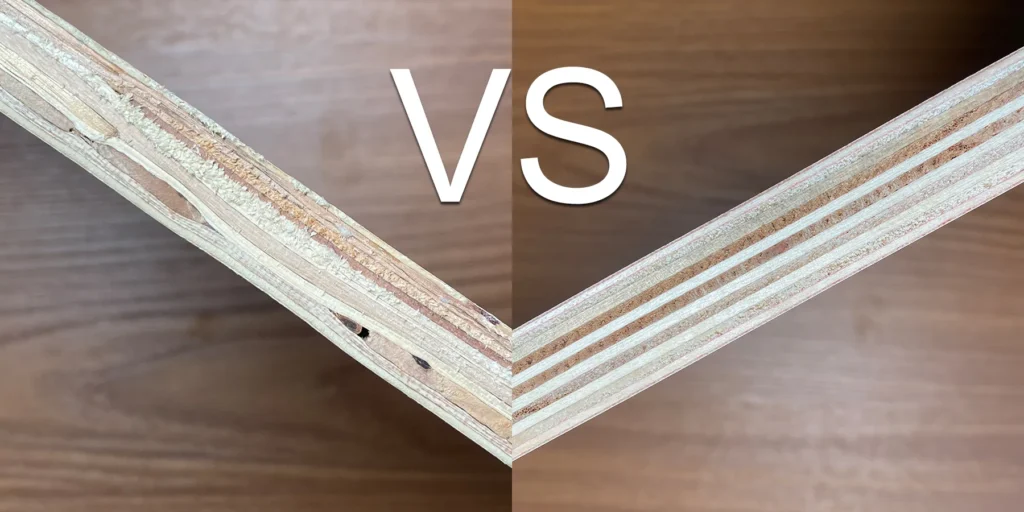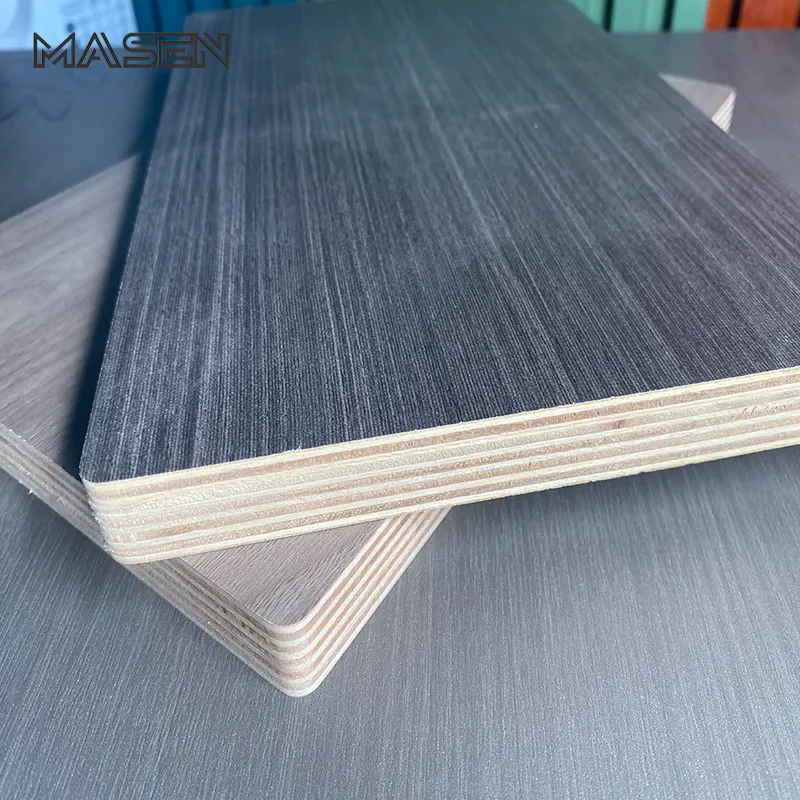Bonding quality is one of plywood’s most crucial attributes. It defines the structural integrity and determines whether the plywood can withstand specific environmental conditions. From dry interiors to humid and wet environments, plywood’s adhesive strength and bonding quality play a pivotal role in ensuring its suitability for a variety of applications.
In this article, we’ll explore the significance of bonding quality, its classification standards, testing methods, and factors that influence it during production.

Why is Bonding Quality Important in Plywood?
The primary function of plywood is to provide a strong, durable, and stable surface for construction, furniture, and various applications. However, its reliability depends heavily on the bonding strength between its veneers. Poor bonding quality can lead to delamination, reduced durability, and failure under stress.
Plywood with strong bonding can:
- Withstand humid or wet environments without delaminating.
- Perform well under stress or shear forces.
- Provide longevity for both interior and exterior applications.
Bonding Quality Classifications
To ensure plywood meets specific environmental and performance needs, several international standards classify bonding quality. Let’s break down the classifications:
European Standard (EN 314-2):
The European Standard classifies bonding quality into three categories:
| Classification | Description |
|---|---|
| Class 1 | For dry conditions. Suitable for normal interior use only. |
| Class 2 | For protected exterior conditions, allowing brief exposure to weather. Also suitable for Class 1 applications. |
| Class 3 | For full exterior conditions, capable of withstanding prolonged exposure to weather. Can also be used for Class 1 and Class 2 applications. |
Japanese Standard (JAS):
The Japanese Agricultural Standard (JAS) uses a slightly different classification system, focused on wet conditions:
| Classification | Description |
|---|---|
| Type Special | Designed for continuous exposure to wet conditions. Suitable for outdoor use. |
| Type 1 | Ideal for locations where wet conditions occur intermittently. |
| Type 2 | Suitable for areas exposed to wet conditions only occasionally. |
These classifications allow manufacturers and users to select plywood with the appropriate bonding quality for their specific needs, ensuring durability and performance.
How is Bonding Quality Tested?
Several rigorous testing methods are employed to verify the bonding strength of plywood. These tests ensure the plywood meets industry standards and performs reliably under intended conditions.
- Bonding Shear Test:
- This test measures shear strength and the percentage of wood failure.
- A sample is exposed to wet conditions and then subjected to a shear load using a universal testing machine until the plywood breaks.
- Delamination Test:
- This test measures the extent of veneer delamination after exposing plywood samples to wet or humid environments.
- A high-quality bond ensures minimal or no delamination under these conditions.
- Knife Test:
- A quick and efficient way to estimate bonding quality.
- A knife is used to lift the surface veneer, and the remaining wood fibers are inspected visually. The higher the amount of wood fiber left intact, the better the bonding quality.
Factors Affecting Plywood Bonding Quality
Every step in the plywood manufacturing process impacts bonding quality. From the type of glue used to the condition of the veneers, achieving a strong bond requires precision and control. Let’s take a closer look at the key factors:
1. Glue Quality:
The adhesive used in plywood production is critical for bonding strength. Common issues and considerations include:
- Fillers in Glue: While fillers are added to reduce production costs, excessive fillers can weaken the bond.
- Solid Content: The glue’s solid content should ideally range between 40% and 50%.
- Thick or rough veneers require low solid-content glue but in larger quantities.
- Veneers with high moisture content need glue with higher solid content to achieve a durable bond.
- pH Levels: The optimal glue pH is between 4.5 and 5.0 to ensure proper adhesion.
What Are the Different Types of Plywood Glue? >>
2. Veneer Quality:
The veneers themselves must meet certain standards to ensure proper bonding.
- Softened Veneers: Veneers should be adequately softened during production to enhance glue absorption.
- Moisture Content: Veneers with excessive or insufficient moisture content can compromise bonding quality.
- Uniform Species: While some manufacturers mix wood types, it’s preferable to use veneers from the same species for consistency in bonding and structural performance.
The Different Grades of Plywood Veneer >>
3. Bonding Process:
The manufacturing process plays a crucial role in determining bonding quality.
- Glue Application: Applying too much or too little glue can weaken the bond. Uniform application is key.
- Aging Time: After applying glue, the veneers must be aged before hot pressing.
- Over-aging can reduce the effectiveness of the glue resin.
- Aging time should be adjusted seasonally (shorter in summer, longer in winter).
- Hot Press Pressure: During pressing, rapid pressure release can cause bubbles inside the plywood, weakening its structure. A controlled and gradual reduction in pressure is essential.
Why Bonding Quality Matters for End-Users
For users and buyers, understanding bonding quality ensures they choose the right plywood for their project. Whether it’s for indoor furniture, exterior walls, or wet areas like kitchens and bathrooms, selecting plywood with the appropriate bond strength ensures durability and safety.
Here’s how bonding quality affects different applications:
- Indoor Use: Class 1 or Type 2 plywood is sufficient for dry areas like living rooms or bedrooms.
- Semi-Humid Conditions: Class 2 or Type 1 plywood works well for areas with occasional moisture exposure, such as laundry rooms or protected outdoor spaces.
- Wet Conditions: Class 3 or Type Special plywood is necessary for continuous wet environments like outdoor decks or kitchens.
Conclusion
The bonding quality of plywood is a critical factor that determines its performance, durability, and suitability for specific environments. Adherence to international standards, proper testing, and careful manufacturing processes ensure plywood meets the demands of both commercial and residential projects.
Whether you’re a manufacturer, contractor, or homeowner, understanding the nuances of plywood bonding quality helps you make informed decisions, ensuring your plywood performs reliably for years to come. From glue formulations to veneer preparation, every detail matters in delivering a high-quality product that stands the test of time.


